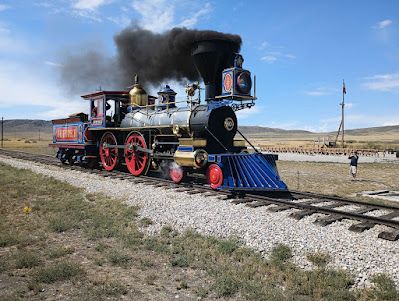 |
| Mary & Steve with petroglyphs in Utah's Nine Mile Canyon |
The Higginsville Sure Stay Best Western was another good travel motel for us on our trip. The room was very quiet, and the bed was comfortable. We slept well until nearly 6 AM central time.
The motel offered a good breakfast including eggs, sausage, biscuits, gravy, waffles and typical cereal and breads. We were on I-70 east by 7 AM, looking forward to being home. Low clouds helped block the rising sun, and the temperature in the upper 80s which was 20-30 degrees warmer than we had in the west.
After a quick stop at a rest stop west of St. Louis, Mary drove until past East St. Louis into Illinois. While in St. Louis we left I-70 for I-64 eastbound. Gas at Pilot was $3.79, which was higher than we had seen in Missouri, so we just got half a tank. We knew that gas is always priced best at Mt. Vernon, Illinois but we didn’t have enough gas to get us that far on I-64 so we got a half tank and continued east. Since we went through St. Louis on a Saturday morning, traffic wasn’t nearly as bad then we would have seen on a weekday.
Once again, the lunch was our usual Ritz crackers, peanut butter, apples and snacks. After being on the road we were anxious to be home so we made no more stops and were at the house a little before 5 PM.
The fall 2023 trip couldn’t have been better. We enjoyed revisiting places in Utah where we had spent so much time from 1986 until 2010. It was especially good to be with Mark and Cindy who had been to all the Utah stops with us in the past. Like us, they enjoy walking in the desert and looking for petroglyphs or interesting rock formations. The time we spent with Whittingtons in Idaho was great. They took us to places near them that we hadn’t been on our visit there in 2021. Most of the places we would happily revisit any time. We look forward to our upcoming trips with them to Germany this December and Florida in February.






































